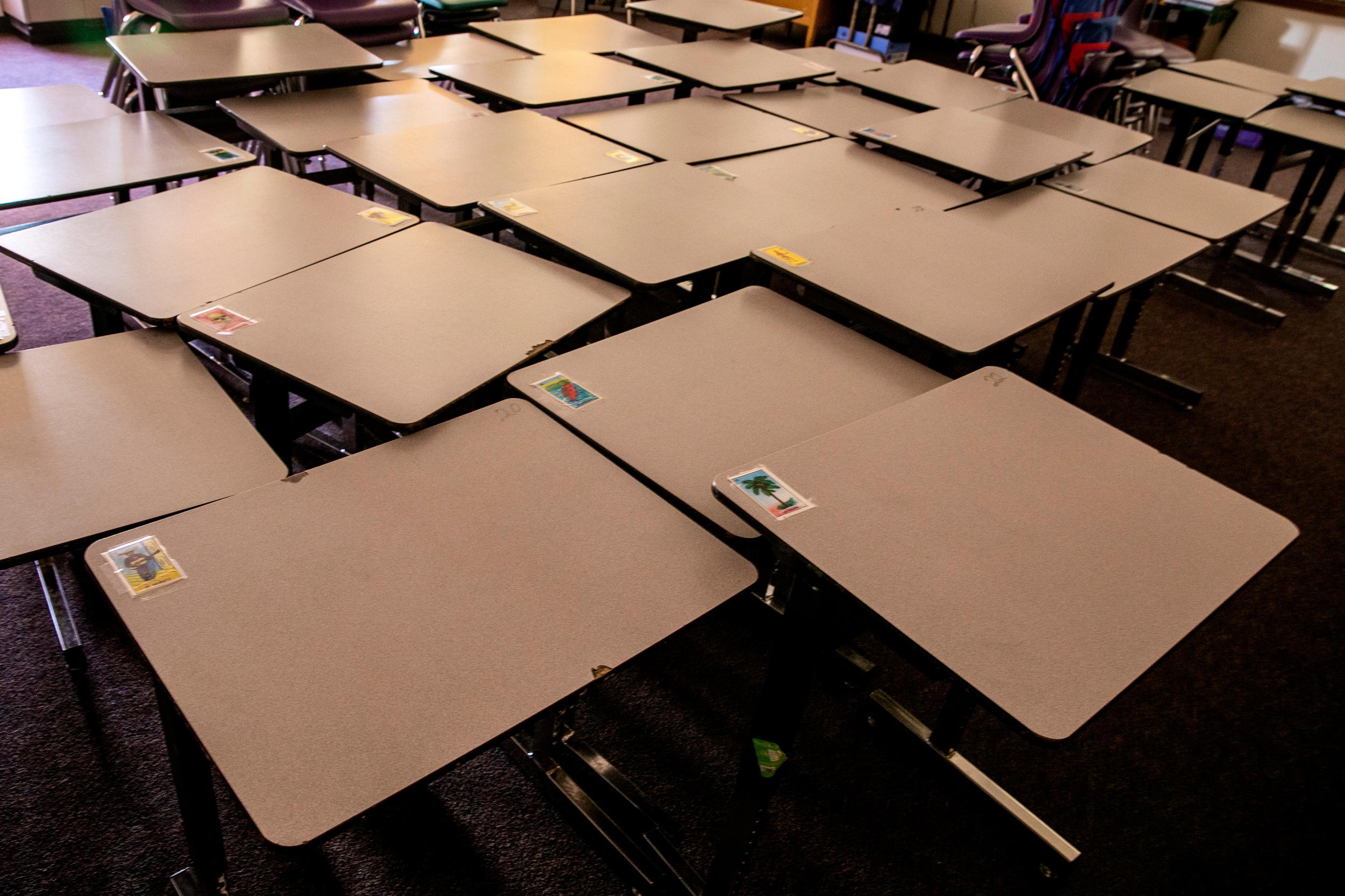
Colorado students in most grades did better on statewide tests in math and English this spring compared to last year.
But scores in almost every grade level and subject area are still below where they were before the pandemic, according to newly released state test results. It’s the first time the state has collected Colorado Measures of Academic Success — CMAS — test results from a full group of students in grades third through eighth since 2019.
State officials celebrated the improved test scores over last year, “but we continue to face the challenge of fully bringing kids back to the levels they were before the disruptions of the pandemic as well as closing the historic opportunity and achievement gaps,” said Colorado Education Commissioner Katy Anthes.
She praised the hard work from teachers, parents and students over the last year. Federal COVID-19 relief funds will continue to be deployed to hire tutors and other academic help.
“I’m confident we will continue our rebound,” she said.
Officials say the results should be interpreted with some caveats: some students may have experienced ongoing disruptions for the 2021-22 school year. Participation in tests also varies across schools, grade levels, and student groups.
1. Third graders were the surprise stars of this year’s reading and writing tests.
Nearly the same percentage of students — about 41 percent — were on target this year as in 2019.
It’s all the more surprising given that this group of students have had almost their entire school career in remote learning.
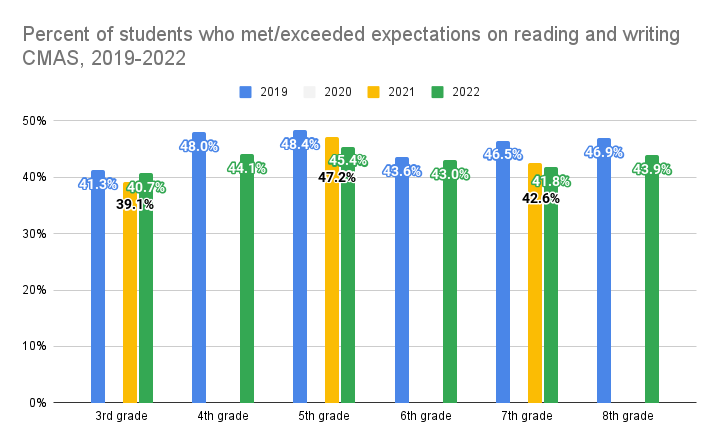
“I will admit that that is not what I would have predicted was going to occur to our youngest students,” said Joyce Zurkowski, chief assessment officer at the Colorado Department of Education. “So the fact that they are rebounding more quickly than some of our other grades I think is a piece of really good news.”
Overall, in 2022 students rebounded slightly in English and especially math with much work still to be done to reach 2019 levels. For example, about 45 percent of fifth graders are reading and writing on grade level now compared to 48 percent in 2019. Only a quarter of Colorado’s seventh graders are on target in math compared to about 32 percent in 2019.
2. Fewer students opted out of taking the test compared to last year.
State officials like to see a 95 percent participation rate. In 2022, participation ranged from 79 to 94 percent, depending on grade and subject. That’s still not at pre-pandemic levels. In 2019, the number of students who took the tests ranged from 89 to 97 percent.
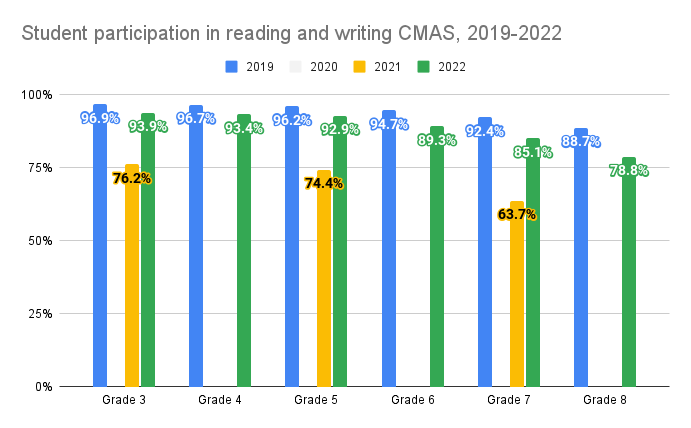
Eighth graders had the lowest test participation at about 79 percent. Black students and students with disabilities aren't taking standardized tests at the same rate. Officials don't know what is driving lower participation among Black students.
“We see, sometimes, with our participation rate for our students with disabilities is due to parental concern about how frustrating the testing experience could be for those students,” said Zurkowski.
3. The huge achievement gaps that exist among racial and ethnic groups, socio-economic groups, English learners and non-English learners, persist.
Racial and ethnic achievement gaps between white and Black/Hispanic students range from 24 percentage points to more than 32 percentage points. Asian students outperform white students in every grade in both math and reading and writing. Gaps in many cases decreased from 2019. But that’s largely because the percent of students who typically test well decreased more sharply.
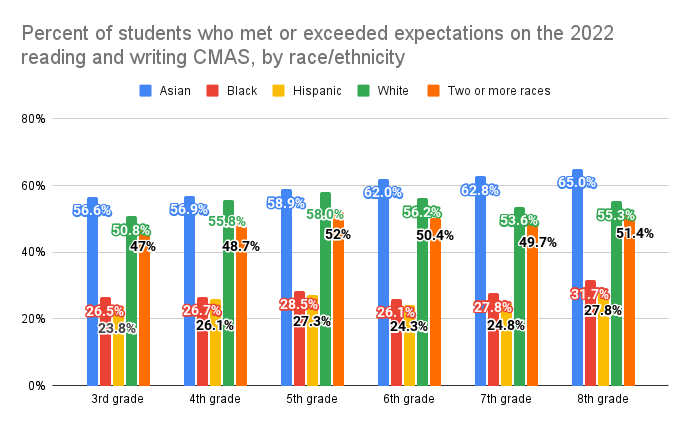
“That is not how we want to see the gap decrease,” said Zurkowski. “Typically, what we want to see is we see both groups increasing in terms of achievement with our historically lower achieving group increasing at a higher rate than our historically higher achieving group.”
Test score gaps between students who are eligible for federal free and reduced-price lunch and their wealthier peers ranged from 23-31 percentage points. State officials said historically underserved populations of students — especially English learners — were disproportionately impacted by the disruption in learning during the pandemic.
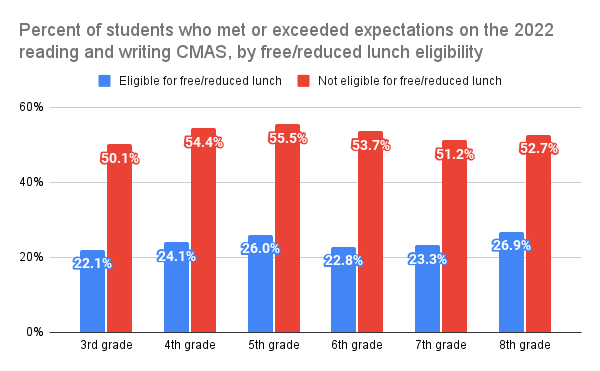
4. The reading gap between boys and girls is still large, but grew smaller mainly because fewer girls tested on grade level.
Girls outpace boys in reading and writing in third grade by 6 points. That grows to 16 points by eighth grade. (By eighth grade, 53 percent of girls are on target, while just 36 percent of boys are.)
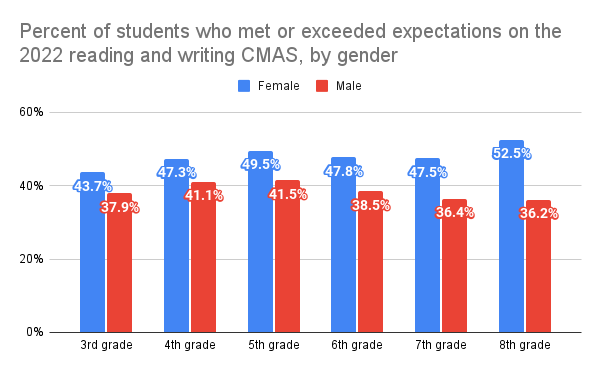
Boys, on the other hand, outperform girls in math by almost 5 percentage points in third grade but that narrows to 0.3 points in eighth grade.
Math gaps increased in several grades compared to 2019 because fewer girls met or exceeded expectations on tests.
5. Math for ninth graders was super hard.
Freshmen taking PSAT (pre-college entrance) tests suffered a nearly 9-point drop in the number of students meeting or exceeding expectations in math compared to 2019. Girls plummeted more than 11 percentage points from 2019, while ninth-grade boys dropped a little more than 6 points.
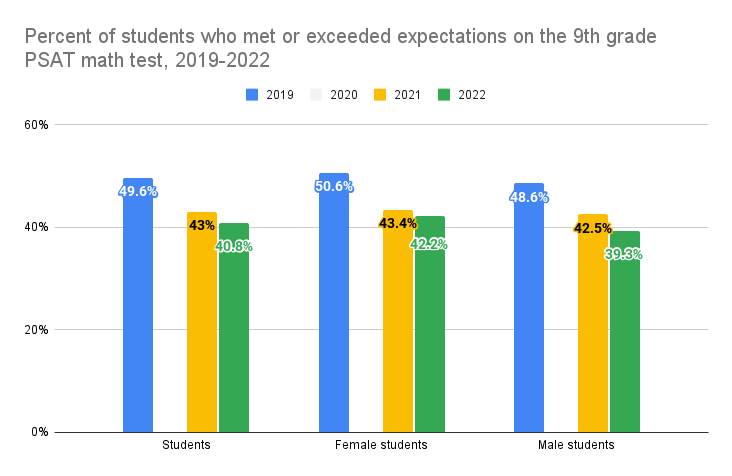
For older students (juniors) in math, about 35 percent are ready for college, at least according to the private, nonprofit College Board that administers the tests. About 58 percent of Colorado 11th graders are where the College Board considers them ready for college in reading and writing.
Achievement in 2022 on college and pre-college tests was higher than in 2019 for 10th graders, but lower for ninth and 11th graders.
6. How did districts do? Test scores strongly correlate to the socioeconomics of the students in a district.
Of course, there are outliers that the state hopes to study to understand why some districts made more gains than peer districts and why. For example, why did Byers 32J in the Eastern Plains see a nearly 10-point increase in reading and writing scores?
Along the Front Range, reading and writing scores ran the gamut — from 14 percent of students on grade level in Adams 14 in Commerce City to a high of 62 percent in Littleton. Other scores for reading and writing on grade level: Denver — 43 percent; Jefferson County – 50 percent; Cherry Creek — 49 percent; Aurora — 24 percent. Notably, Mesa County Valley District 51 and Douglas County each increased more than 3 percentage points over 2019 scores. Pueblo 60 and Adams 14 students each declined 7 and 8 points respectively over pre-pandemic scores.
Math scores also ran the gamut among Front Range districts – from 6 percent of students on grade level in Adams 14 in Commerce City to a high of 49 percent in Douglas County. Other scores for math on grade level: Denver – 29 percent; Jefferson County — 37 percent; Cherry Creek — 40 percent; Aurora — 14 percent. Again, Mesa County Valley District 51 and Douglas County each increased about 3 percentage points over 2019 scores. Pueblo 60 and Adams 14 students each declined 5 and 8 points respectively over pre-pandemic scores.
“We're making some good progress, but there's still work to do,” said Lisa Medler, CDE’s accountability and continuous improvement executive director.
What’s next?
Districts will send families their students’ individual reports that show the subject areas where their child is excelling as well as where they may need more support. The Colorado Department of Education has resources to help parents understand their students’ scores.








